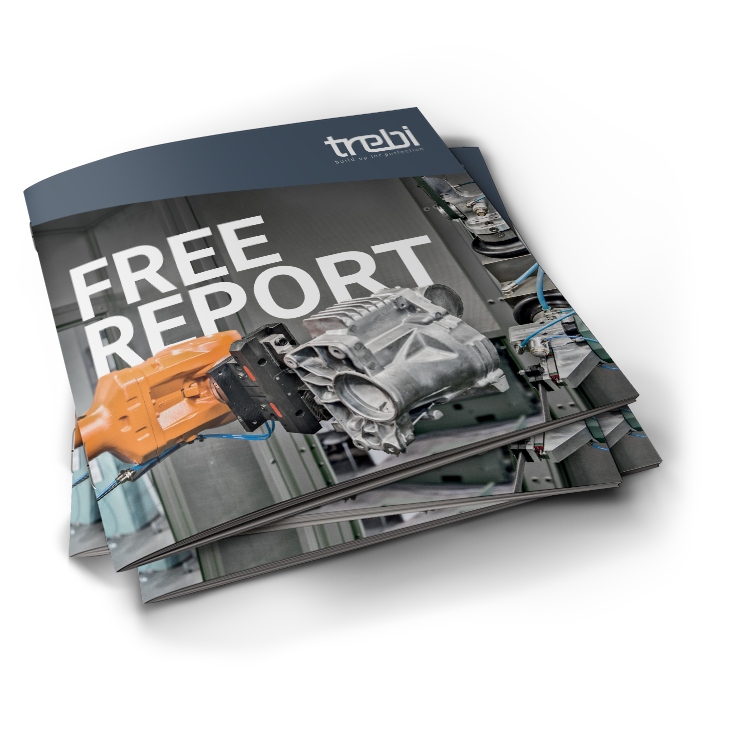LOOK AFTER THE PENCE! AND THE POUNDS WILL LOOK AFTER THEMSELVES!
I don’t know how often my poor grandmother repeated these words.
I think at least 1000 times, but maybe even more.
And I grew up with this conviction and faith. Today,, however, with great reluctance I have to say that my grandma was wrong!
Or rather, these concepts are wrong if you want to become an entrepreneur.
I tell you a story for a better understanding.
Ambrogio (a fancy name) owns a 2 generation foundry. 20 years ago he bought some deburring robots.
These robots produce a piece every three minutes, after that an operator needs 3 minutes to finish the job.
Ambrogio’s cost is 6 minutes.
He thought this was the best solution worldwide!!
Ambrogio buys a new modern machine. The machine is completely different from the one 20 years ago. .
– he changes supplier, because the previous one after 20 years is still offering the same machines. –
The cycle time of the new machine is always 3 minutes, but now the operatore han’t to do anything more!
Ambrogio’s cost is 3 minutes! the half than before!
An incredible result!
now comes the amletico doubt. Shall I keep all or shall I through everything?
So the things to consider are many. The doubts are many.
A definitely changement put us in front of new challenge, nobody likes changements.
First of all we have to start from the assumption that a new machine has higher performances than the one 20 years ago. If you have to invest in a new installazione, but with a 20 years old concept, the forget it.
The machine advantages have to be the following:
– a new machine has to perform knew operations (operations you had to do by hand)
– Better work accuracy
– Better cycle time
– Material lifetime increase
– Reduce of Energy consumption
– Machine connectivity with the rest of the factory
Consider only the fact that with a new machine you can do operations that you had to do by hand until yesterday.
How much do you save?
Performance
It is clear that with a machine the efficiency is much higher than by hand work.
Then you have to consider that the machine can work 3 shifts (so it produces for at least 3 operators)
Availability
If your work cycle depends on the operator, in the event he is missing, your production won’t work! If the operator is at home for sick leave,you will certainly deliver late
How do you plan your production?
Training
This is an increasingly important topic: Train operators who are able to produce compliant parts.
You can carry out a detailed training system, but there is a problem!
How much time do you need to train your staff? When your operator is sufficiently trained to be independent? and if an operator changes job?
Scalability
Today you have to produce 100 pieces and an operator is enough for you, but if tomorrow you have to produce 200 pieces what do you do? If you have a machine that does everything independently without operator, you just need to increase the machine working hours or buy another one.
It’s better to keep limping or to learn running?
This is the question you have to answer.
If it is clear that you want to start running, then you definitely have to throw everything and start all over.
Let’s say that the machine 20-years old machine and the today’s machine have the same performance and that you do not want to improve your production cycle.
How much do the spare parts cost?
It is undeniable that electronics are not eternal, and neither motors.
You have to consider that spare parts have a constant price for the first 10 years, then they increase 10-20% from the eleventh year.
So if you need to replace a robot motor in the first 10 years you pay 1.500 €, if you have to change it after 20 years you pay 5.000 €.
The more the machine gets older the more it has problems and the more spare parts cost.
But the considerations on spare parts and maintenance costs are really difficult to say. Today, there is no way to establish how many failures you will have, and how much the repair will cost. It depends on how you use the machine, the maintenance you make, the model you have installed, the production tolerances of the components….
My experience says that after 15 years-machine-life, if you go on using it for 16 hours a day at a good rate, you spend around 5.000 € in a year of spare parts and maintenance.
From 20 onwards the average will increase.
The downtime to repair the machine becomes higher every year. If you can easily find spare parts in the first 10 years , later you have to wait one week or even more.
To sum up, do you want to be competitive?
So
If you have a machine that implies that the operator finishes the piece, throw it immediately away..
If you have a machine more than 20 years, you should replace it. What you spend for maintenance, you can buy a new one!
Contact me now to deepen your specific case and immediately start having a different vision of your future!

Autore: Trebi Casting Sofia



